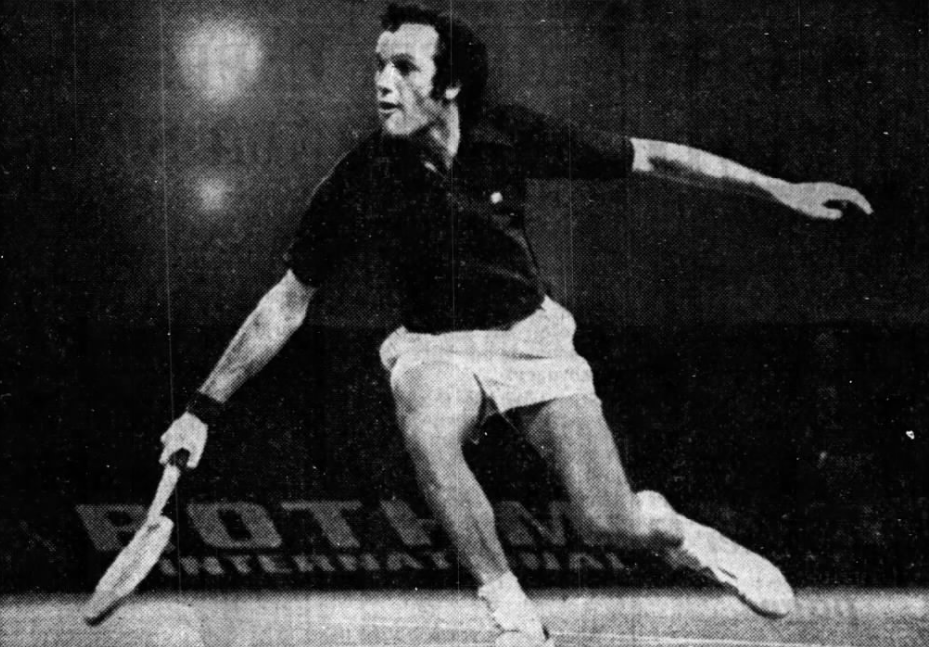
A sense of humor, Tom Okker might have pointed out, was overrated.
Ilie Năstase, clown nonpareil and probably the most talented tennis player on earth, was seemingly incapable of staying serious for long. Some of his best performances came against buddy Jimmy Connors, who was happy to joke around as well. Facing a dour opponent like Okker or Stan Smith, however, the Romanian looked to the crowd for approval, forgetting that style didn’t count toward the final score.
Năstase reached the final of the 1973 Dewar Cup at London’s Royal Albert Hall with a glittering, final-set-tiebreak victory over Connors. On November 17th, battling Okker in the championship match, the magic was gone. His legions of teenage British fans adored him regardless of the outcome, and he didn’t seem to care too much either.
Okker, the “Flying Dutchman” and second place in the Grand Prix points race, was one of the few puzzles Năstase couldn’t solve. The two men had played five times already in 1973, and Okker had won three of them. Perhaps the Romanian was tired: London was his 38th week of the year in competition. But, as Lance Tingay pointed out in the Daily Telegraph, the Dutchman had played nearly as much.
The first set was a 6-3 breeze for Okker, marred only by his opponent’s usual antics. In the fifth game, Năstase gestured with his left arm while waiting to connect with a smash, apparently indicating where he planned to hit the ball. Okker protested that it was a distraction, but the umpire didn’t think it was worth a penalty. Indeed, by Năstase’s abrasive standards, it barely merited any notice at all.
The Romanian ran off four of the first five games in the second set, and he came within one point of a 5-1 advantage. But there, Tingay wrote, “his talents died.” Okker’s down-the-line passing shots hit the mark again and again, and Năstase didn’t win another game. Oddly enough for a consensus number-one player, Ilie found himself flummoxed by a challenger. “I can’t beat Okker,” he said after the match.
The victory was worth £3,000, and the title went a long way toward securing even more for the Dutchman in the Grand Prix race. Second place in the season-long competition was worth £15,000, while the third-place finisher earned £11,000. (Năstase had already clinched the £22,000 first prize.) Okker started the week with a five-and-a-half point lead over John Newcombe, and Newk’s loss the day before to Jiří Hřebec in the Davis Cup semi-final meant that he couldn’t match Okker’s 40-point Dewar Cup haul. Both men would have just one more shot to pad their totals: Okker at the South African Open, and Newcombe in the Davis Cup final, if Australia got that far.
Newk’s window had yet to close: Rod Laver and Ken Rosewall won the doubles rubber to give the Aussies a 2-1 edge against Czechoslovakia. But catching the Dutchman was never easy. Unlike his most familiar foe, Okker wasn’t one to beat himself.
* * *
This post is part of my series about the 1973 season, Battles, Boycotts, and Breakouts. Keep up with the project by checking the TennisAbstract.com front page, which shows an up-to-date Table of Contents after I post each installment.
You can also subscribe to the blog to receive each new post by email: